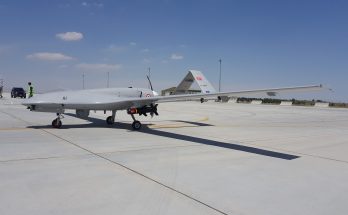With negotiations between India and France’s Dassault over a potential $20 billion deal nearing completion, one major hurdle remains: meeting the original pricing bid offered by the French company. That price enabled Dassault’s Rafale jet fighter to beat out the Eurofighter Typhoon in the competition to meet India’s Medium Multi-Role Combat Aircraft (MMRCA) requirement. The offer presented by Dassault made it the lowest bidder (L-1 in Indian defense procurement parlance) during the commercial evaluation period that culminated on January 31, 2012, when its Rafale was ultimately declared the winner.
As it currently stands, the deal – which has remained under negotiation for more than three years now – is 90 percent finalized.
For Dassault, inking the contract would represent a major coup as it has repeatedly failed to clinch an export sale of the Rafale – the lone purchase coming only recently from Egypt, and then only because of very generous credit arrangements offered by France. But Dassault remains concerned whether India’s defense industrial sector has the capacity to supply the percentage of parts (30-50 percent) that are required under the contract and whether Hindustan Aeronautics Ltd (HAL) is technologically capable enough for Dassault to partner with on such an advanced aircraft.
Under the terms of the MMRCA tender, the first batch of 18 aircraft are to be produced by the selected vendor and arrive in India in flyaway condition, with the remaining 108 units to be license produced by HAL, India’s state-owned aerospace giant. India has demanded that Dassault guarantee the HAL-produced aircraft, something the French aerospace company is reluctant to do, particularly as it worries over the manual process used by HAL to fabricate the aircraft’s carbon-fiber coating (Dassault utilizes an automated process that is faster).
For its part, India believes it was misled by Dassault’s commercial bid. Over the course of three years of fleshing out an agreement, India’s contract negotiation committee discovered that the Dassault bid actually came in over the cost of that of the Eurofighter Typhoon option, rather than below as was initially believed. India’s inexperience with factoring in life-cycle costs (the cost of buying, flying, maintaining, and refitting an aircraft over a 30- to 40-year period), plus alleged incomplete details on the part of Dassault, apparently led to an incorrect conclusion in 2012.
With a mechanism being determined whereby no penalties or liquidity damages are charged to Dassault in the event HAL fails to deliver according to specified timelines, the pricing issue now becomes the final obstacle blocking conclusion of a deal.
Against this backdrop is the ailing condition of the Indian Air Force’s combat aircraft capability. Down to just 34 fighter squadrons from what India hopes will be a future total of 44 available squadrons by 2027, there is now a pressing need to move two separate jet fighter projects forward – the MMRCA and the Indian-Russian Fifth-Generation Fighter Aircraft. Otherwise, India needs to begin looking at alternatives.
Indian Prime Minister Narendra Modi headed to France on April 9 as part of a 10-day, three-nation tour, and there is a sentiment that this may be the tipping point for Dassault to lock up a Rafale deal. But if Dassault hopes to secure a contract, it may want to revisit its increased cost estimates – the result of an estimated rise in the man-hours required for HAL to produce the planes. For the Indian government, agreeing to a deal with higher unit prices is a political no-no. So, what we have at the moment is an immovable object meeting an escalating production estimate. Without any movement on the part of one of the parties, the final 10 percent of negotiations needed to be fleshed out for a deal to be reached may ultimately prove more damaging to Dassault’s hopes than the initial 90 percent.
For 50 years, Forecast International intelligence reports have been the aerospace and defense industry standard for accurate research, analysis, and projections. Our experienced analysts compile, evaluate, and present accurate data for decision makers. FI's market research reports offer concise analysis of individual programs and identify market opportunities. Each report includes a program overview, detailed statistics, recent developments and a competitive analysis, culminating in production forecasts spanning 10 or 15 years. Let our market intelligence reports be a key part of reducing uncertainties and mastering your specific market and its growth potential. Find out more at www.forecastinternational.com



